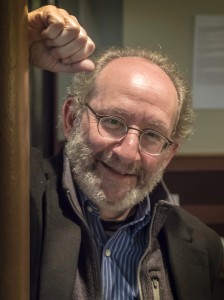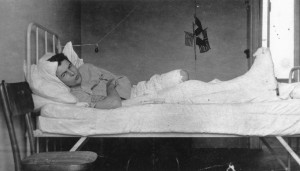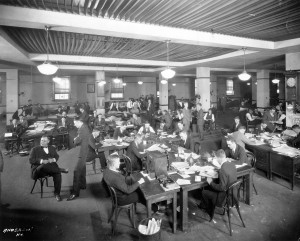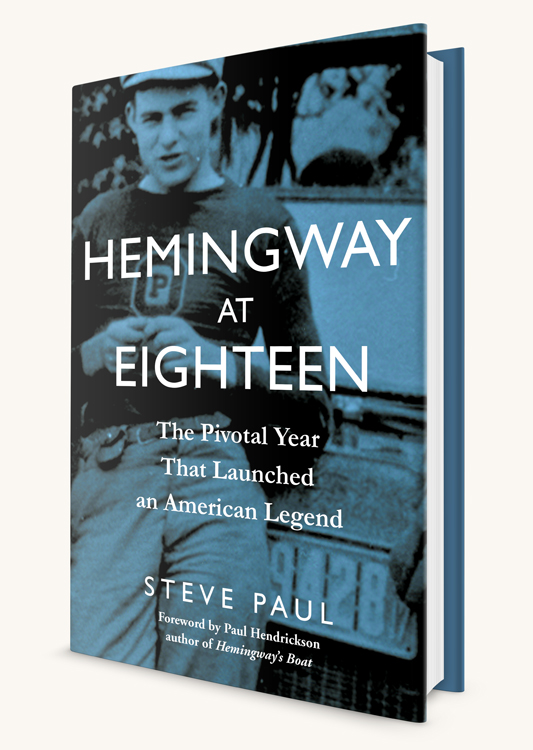 In Hemingway at Eighteen, author Steve Paul provides a unique look at how the span of time between the summer of 1917 and the summer of 1918 was a life-changing year for Ernest Hemingway. October 15, 2017, marks the 100th anniversary of Ernest Hemingway’s arrival in Kansas City to work for the Kansas City Star.
In Hemingway at Eighteen, author Steve Paul provides a unique look at how the span of time between the summer of 1917 and the summer of 1918 was a life-changing year for Ernest Hemingway. October 15, 2017, marks the 100th anniversary of Ernest Hemingway’s arrival in Kansas City to work for the Kansas City Star.
Hemingway graduated from Oak Park and River Forest High School in June 1917, five weeks before his eighteenth birthday. All of his friends were headed to college or were fighting in the Great War, but Hemingway was indecisive, so he accepted an apprenticeship at the Kansas City Star, one of the great newspapers of its day. This was the first time that he was exposed to urban violence and the hard work of writing and meeting deadlines. After working at the newspaper, he joined the Red Cross ambulance service in Italy, where two weeks before his nineteenth birthday, he was wounded at the front.
Author Steve Paul took the time to chat with us about why Kansas City was so important to Ernest Hemingway and how the Kansas City Star newsroom transformed the young writer.
What inspired you to write Hemingway at Eighteen? As a Hemingway scholar, did you learn anything new about Hemingway’s early life?
As a longtime staff member at the Kansas City Star, Hemingway’s first newspaper, I hadn’t dwelled too much on his legacy. But in 1998, with the centennial of his birth approaching, I began a months-long immersion project with the aim of producing a special section for the newspaper about Hemingway and his influence. As part of that I began traveling through the Hemingway world to conferences, met many scholars and others working on his life and began researching his period in Kansas City. In subsequent years that research led to discoveries of previously unacknowledged material and likely influences that he found while working as a reporter. That led to the idea of producing a book, which accelerated when I found some particular voices who illuminated this early period, especially one who had not previously been heard from.
Why was Kansas City so important to Hemingway? He returned to the city throughout his life, so it seems like it left quite an impression on him.
As I write in the book, Kansas City served as something like the college education Hemingway never had. He was introduced the social and cultural dynamics of a vibrant, aspiring, somewhat prosperous and gritty city, a smaller version of Chicago, with its stockyards, bustle and crime. Over the years he kept in touch with at least one cousin. He and his second wife, Pauline, chose to give birth to their two sons in Kansas City. And Hemingway’s experience yielded memories, moments in various books and at least two full-length short stories.
 For Ernest Hemingway, his 18th year started in a bustling newsroom and ended in a hospital bed in Italy. How did these experiences transform him from a shy boy to a confident writer?
For Ernest Hemingway, his 18th year started in a bustling newsroom and ended in a hospital bed in Italy. How did these experiences transform him from a shy boy to a confident writer?
Hemingway did gain a certain self-confidence while in Kansas City, partly due to the knowledge that he had succeeded and thrived in an environment among older journalists, many of whom were also striving to become writers of note. He countered his shyness with a kind of bravado and boisterousness, which clearly erupted throughout his Kansas City apprenticeship as well as in his fateful experience with the ambulance service in Italy.
 During his six and a half months at the Kansas City Star, Hemingway was surrounded by experienced readers and writers in the Star newsroom, which served as a substitute English class. How did these interactions with his fellow writers change and/or inspire him?
During his six and a half months at the Kansas City Star, Hemingway was surrounded by experienced readers and writers in the Star newsroom, which served as a substitute English class. How did these interactions with his fellow writers change and/or inspire him?
The pages of the newspaper were filled with literature and book news. The mostly anonymous writers on the staff clearly created a bookish atmosphere, and Hemingway’s editors instilled in him aspects of style, creativity and narrative drive. Although the direct evidence remains sketchy, Hemingway must have been aware of the kinds of literary seminars his fellow writers performed in Sunday feature stories and in a piece like the one I detail that connects a horrendous murderer to a character from Dostoyevsky.
At one point in the book, you wrote, “The Hemingway journey is long and winding and full of contradictions as well as the eternal clash of fact and fiction.” Did you come across any of these contradictions during your research?
There are a handful of mythic tales from Kansas City, even a couple or three that Hemingway repeated years later, that the evidence or other witnesses, when examined closely, undermine. In Italy, the evidence remains foggy but I go along with a conclusion that Hemingway exaggerated his experience to a certain extent, especially regarding the story that, while wounded himself, he carried a bleeding Italian soldier on his shoulders to safety.
What was your favorite part about writing this book? What was the most difficult part?
Favorite: Discovering new material in various libraries and archives and connecting minute dots from the published record and documentary evidence. The hardest part was attempting to fill some large gaps, given that we only know about 30 letters that Hemingway wrote to his family from Kansas City, and many of those are perfunctory, fact-free or factually unreliable. Writing about the Italian period also required negotiating inconsistencies and contradictions left by previous biographers and Hemingway himself.
 “A clear, concise, sympathetic account of a gifted young man discovering who he is—and what he can do.”—Kirkus
“A clear, concise, sympathetic account of a gifted young man discovering who he is—and what he can do.”—Kirkus
“Written in clear, graceful prose, Paul’s book reads like a novel. It should please Hemingway enthusiasts of all stripes.” —Booklist
“Hemingway at Eighteen is a valuable contribution to our understanding the origins of one of the most revered authors of the twentieth century.” —Chicago Review of Books
“Do we need another Hemingway biography? Absolutely, if it’s as intelligent, insightful, and big hearted as Hemingway at Eighteen. This is a Hemingway few of us know—dazzlingly talented but still young, pulsing with ambition, and searching for his place in the literary world. Steve Paul has given us the origins of a legend.” —Candice Millard, author of The River of Doubt: Theodore Roosevelt’s Darkest Journey
Hemingway at Eighteen: The Pivotal Year That Launched an American Legend pubbed on October 1, and is available wherever books and e-books are sold.
[Order it now $27] [Request a review copy]
No Comments
No comments yet.